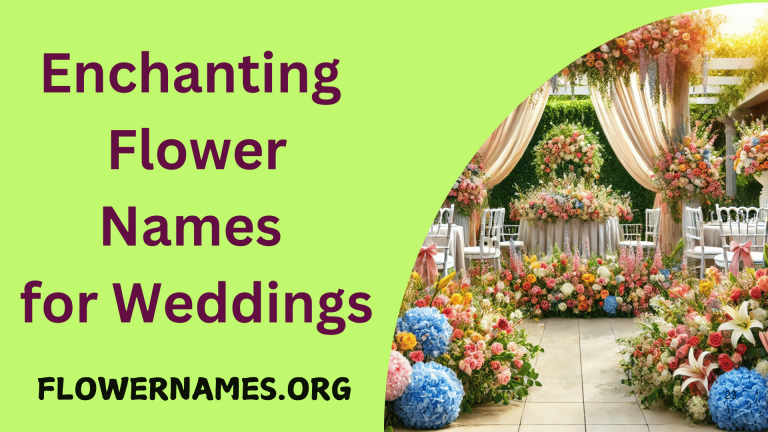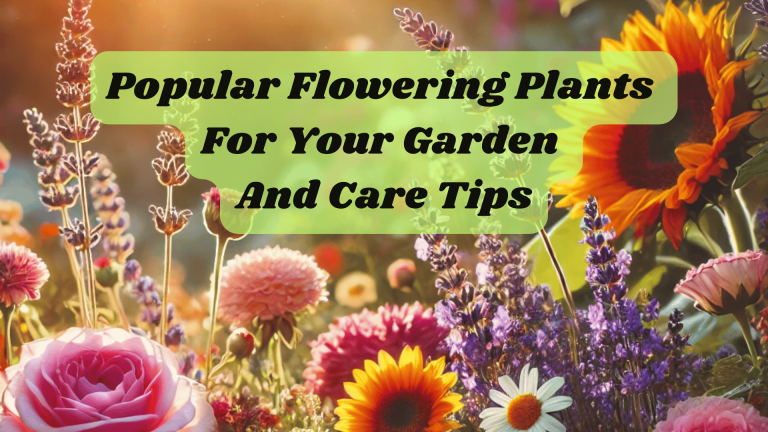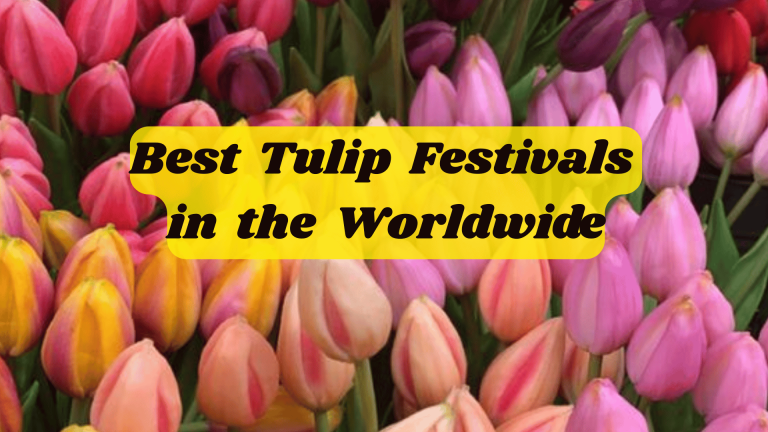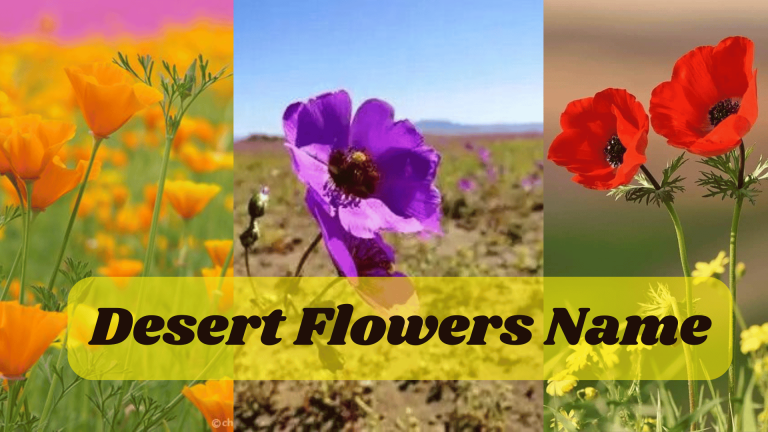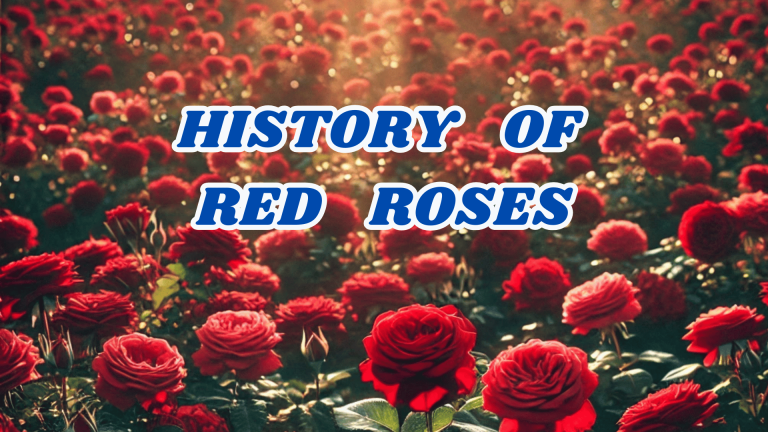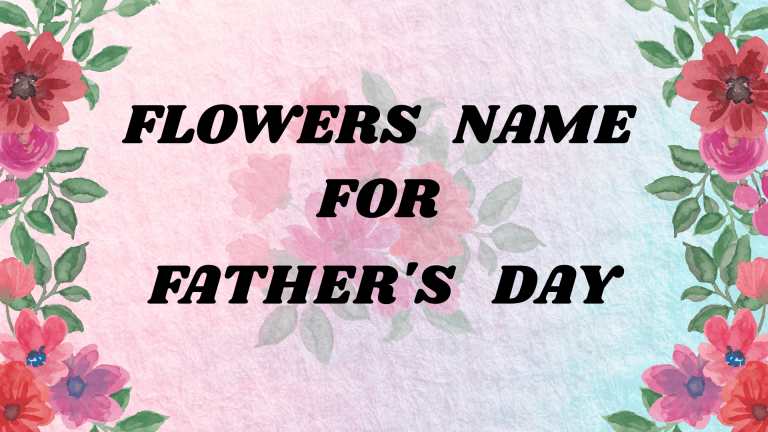20+ Most Popular Blooms of Nature: Black Flowers name
Flowers are usually considered to be bright in colors reds, yellows, pinks and purples that make gardens look bright and radiant making people feel love, joy and serenity. But in this floral splendor there is an unusual, mysterious group of flowers which fascinates with its dark elegance: black flowers. Bold, mysterious, and striking, black flowers are a great choice for the ones who wish to bring depth, contrast, and drama to their garden or bouquets.
In this article, the world of black flowers will be examined in detail: from their symbolism and varieties to growing tips, uses and where you can buy them. Let’s immerse ourselves into the beauty of these dark blooms.
The Unique Beauty Of Black Colored Bloom
Black flowers are not black, as their name implied. Instead, they are very deep shades of red, purple or maroon, dark as black to the eye. The petals capture little light, therefore attaining rich velvety appearance. Such high concentrations of anthocyanins provide the dark shades – the same pigments that are responsible for the color of the red wine and blueberries.
Although naturally scarcely, wild black flowers and domestic black flowers exist, and they have become increasingly popular for landscaping and composition of bouquets.
Meaning And Symbolism Of Black Flowers
Black flowers have numerous symbolic meanings which may differ from culture and situation:
Mystery and Elegance:
Some of the effects of rarity on black flowers is that they become a reflection of intrigue and sophistication.
Farewell and Mourning:
During Victorian times, the black flowers were usually used as an indication of death or farewell.
Rebirth and Strength:
In contemporary symbolism, black flowers can represent strength, courage, new beginnings since they challenge boundaries of a natural beauty.
Romantic Rebellion:
Black roses and tulips are usually selected by people who prefer unconventional manifestations of love.
Such symbolic values make these flowers distinctive in weddings as well as the memorial services.
25 Stunning Types of Black Flowers
Here are some of the most beautiful black flowers name that you can grow or admire:
1. Black Rose
There is no naturally black rose but varieties like ‘Black Baccara’ and ‘Black Jade’ are almost black. Their deep burgundy petals give an impression of black and are perfect for gothic-themed gardens or bouquets.
2. Black Tulip
Varieties like ‘Queen of Night’ and ‘Black Hero’ are dramatic tulips with velvety texture and dark colors. They bloom late in spring and look great with white or pink tulips.
3. Black Dahlia
Dahlias such as ‘Arabian Night’, ‘Black Jack’ provide layers of dark petals. They are showy focal points in late summer gardens.
4. Black Calla Lily
The ‘Black Star’ and ‘Odessa’ calla lilies are elegant and sophisticated and are ideal for modern bouquets or arrangements.
5. Black Petunia
Petunia varieties such as ‘Black Velvet’ offer a rich, almost true black hue. They’re perfect for containers and window boxes.
6. Black Iris
‘Before the Storm’ and ‘Hello Darkness’ irises flaunt ruffled, dramatic petals in near-black hues and make excellent perennials.
7. Hellebore ‘Black Beauty’
Also known as the Lenten rose, this flower blooms in winter to early spring and adds dark charm to shady spots.
8. Bat Flower (Tacca chantrieri)
This rare flower has long, bat-like “whiskers” and wings. Native to Southeast Asia, it thrives in warm, humid climates.
9. Black Pansy
Dark pansies are perfect for planting in the cold months and bring strong colors to pots and gardens.
10. Black Viola (‘Molly Sanderson’)
These dainty flowers offer rich color and look stunning in hanging baskets or ground covers.
11. Black Scabiosa (Scabiosa atropurpurea ‘Black Knight’)
With pincushion-like heads, this flower attracts pollinators and adds height to flower arrangements.
12. Chocolate Cosmos (Cosmos atrosanguineus)
Smelling like chocolate and flaunting dark red to almost-black petals, this flower is a garden favorite.
13. Black Hollyhock (Alcea rosea ‘Nigra’)
This tall, biennial flower makes a bold statement in cottage-style gardens.
14. Black Columbine (Aquilegia vulgaris ‘Black Barlow’)
Unique star-shaped blooms with dark tones make this a perfect addition to a woodland garden.
15. Black Snapdragon (‘Night and Day’)
Featuring dark petals with a hint of maroon, these are great for contrast with lighter colors.
16. Black Lily (Lilium ‘Landini’)
These exotic lilies bloom in mid-summer and have a glossy, almost lacquered look.
17. Black Sunflower (‘Chianti’)
A deep maroon sunflower that appears black in low light, adding a twist to traditional sunflower displays.
18. Black Hyacinth (‘Dark Dimension’)
This fragrant flower blooms in spring with spikes of deep purple-black florets.
19. Black Geranium (‘Dark Reiter’)
Great for borders and rock gardens, this plant offers both dark foliage and near-black flowers.
20. Black Petasites
Less common but visually striking, it thrives in damp, shaded areas.
21. Black Gladiolus (‘Black Star’)
Sword-like foliage and tall spikes make this an elegant choice for summer gardens.
22. Black Carnation (‘Black Magic’)
Used in exotic floral arrangements and symbolizing mystery.
23. Black Zinnia (heirloom varieties)
Rare, but some cultivars boast very deep tones.
24. Black Ornamental Pepper
Though not technically a flower, the deep black fruits and foliage make this an interesting garden companion.
25. Black Nigella (‘Midnight’)
Feathery foliage and seed pods add texture to garden beds.
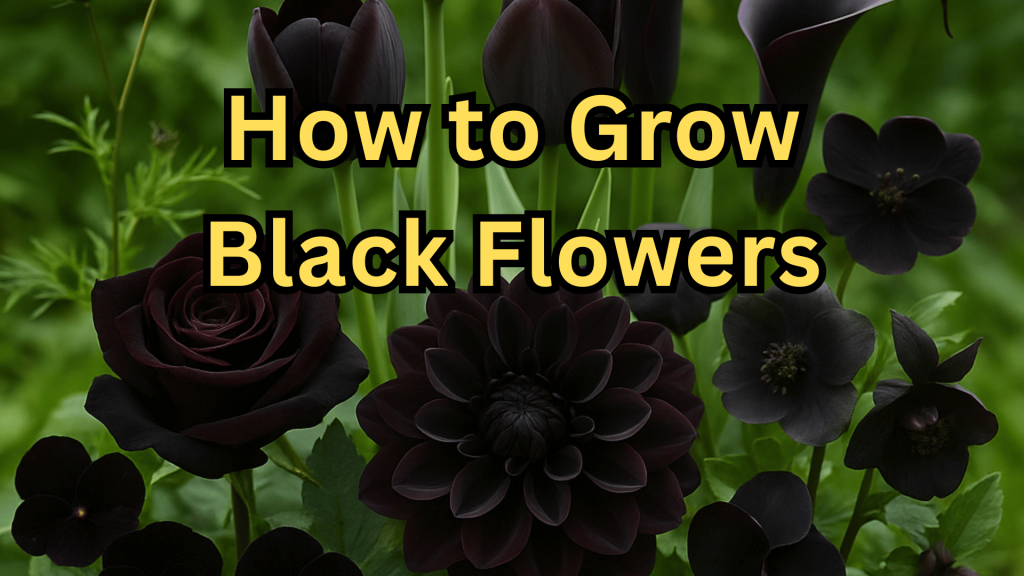
How to Grow Black Flowers
Growing black flowers is similar to growing regular flowers, but attention to soil, light, and watering is essential to bring out the intensity of their hues.
Soil & Drainage
Most black flowers prefer well-drained soil rich in organic matter. You can amend the soil with compost or leaf mold to improve fertility.
Light
Sunlight is crucial for pigmentation. To achieve the darkest tones, grow your plants in full sun (6–8 hours daily). Shade-grown plants may appear more purple or red.
Watering
Avoid overwatering, which can lead to root rot. Water when the top inch of soil is dry. Mulching can help retain moisture.
Fertilizer
Use a balanced fertilizer (e.g., 10-10-10) during the growing season to support lush foliage and bloom production.
How to Use Black Flowers in Garden Design
Black flowers bring contrast, depth, and drama to garden designs. Here are ways to incorporate them:
- Monochrome Gardens: Create a mysterious, modern vibe by combining black flowers with deep purples and dark foliage.
- Contrast with Brights: Pair black flowers with white, yellow, or pink to make them pop.
- Gothic Themes: Perfect for Halloween or gothic gardens when combined with pumpkins, dark foliage, or wrought iron features.
- Focal Points: Use them as centerpiece plants to draw the eye.
- Borders and Edges: Black petunias or violas work great as borders around lighter flowers.
Where to Buy Black Flowers
Black flower seeds, bulbs, and plants can be purchased from:
- Online Nurseries: Burpee, Eden Brothers, Baker Creek Heirloom Seeds
- Local Garden Centers: Many now stock unique varieties due to rising popularity.
- Flower Shows and Expos: Great place to find rare or experimental cultivars.
- Botanical Gardens and Seed Exchanges: For heirloom varieties or rare specimens.
When ordering online, always check for hardiness zones and ensure the plant suits your local climate.
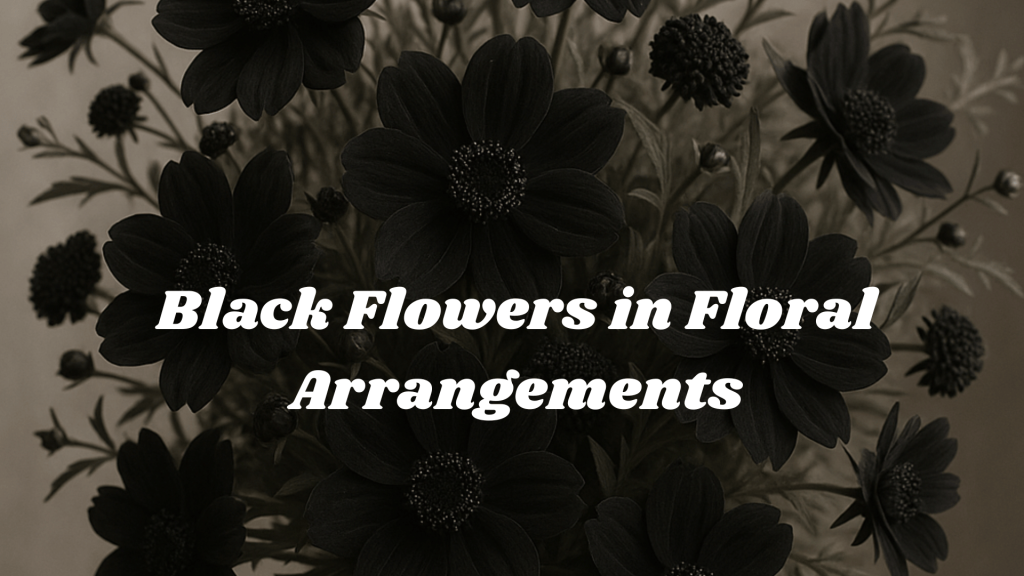
Black Flowers in Floral Arrangements
Florists love black flowers for their sophistication and contrast. They’re used in:
- Weddings: Often mixed with blush or ivory blooms for a romantic yet modern touch.
- Halloween Arrangements: A natural choice for themed events.
- Memorials: Symbolic and tasteful for saying goodbye.
- Fashion Events: High-end arrangements and editorial photoshoots often include black flowers.
To make them last longer in vases:
- Cut stems under water.
- Remove leaves below the waterline.
- Add floral preservatives or sugar/vinegar mixture.
Are Black Flowers Natural or Dyed?
Most black flowers are naturally occurring dark shades, but florists sometimes use dyeing techniques to achieve true black. Common methods include:
- Stem Absorption: Stems are placed in dyed water.
- Spray Painting: Floral-safe paints are applied to petals.
- Genetic Engineering: Scientists are experimenting with deeper pigmentation through selective breeding.
Natural black flowers still tend to be more sought after due to their authenticity and botanical interest.
Also Check: Tropical flowers name
Conclusion
Black flowers are this amazing combination of beauty, mystery and rarity. For a gardener wanting to add drama to his garden to someone fascinated by their symbolism, these blooms are something special. Varying from tulips and roses to exotic bat flowers and dahlias, black flowers prove the established norms of nature beauty. With the proper attention and a creative vision of things, they can turn gardens, bouquets, and events into pieces of art.
Pyfont you admire their mystique or their decadence, there is one thing for sure about black flowers, and that is they are memorable.

